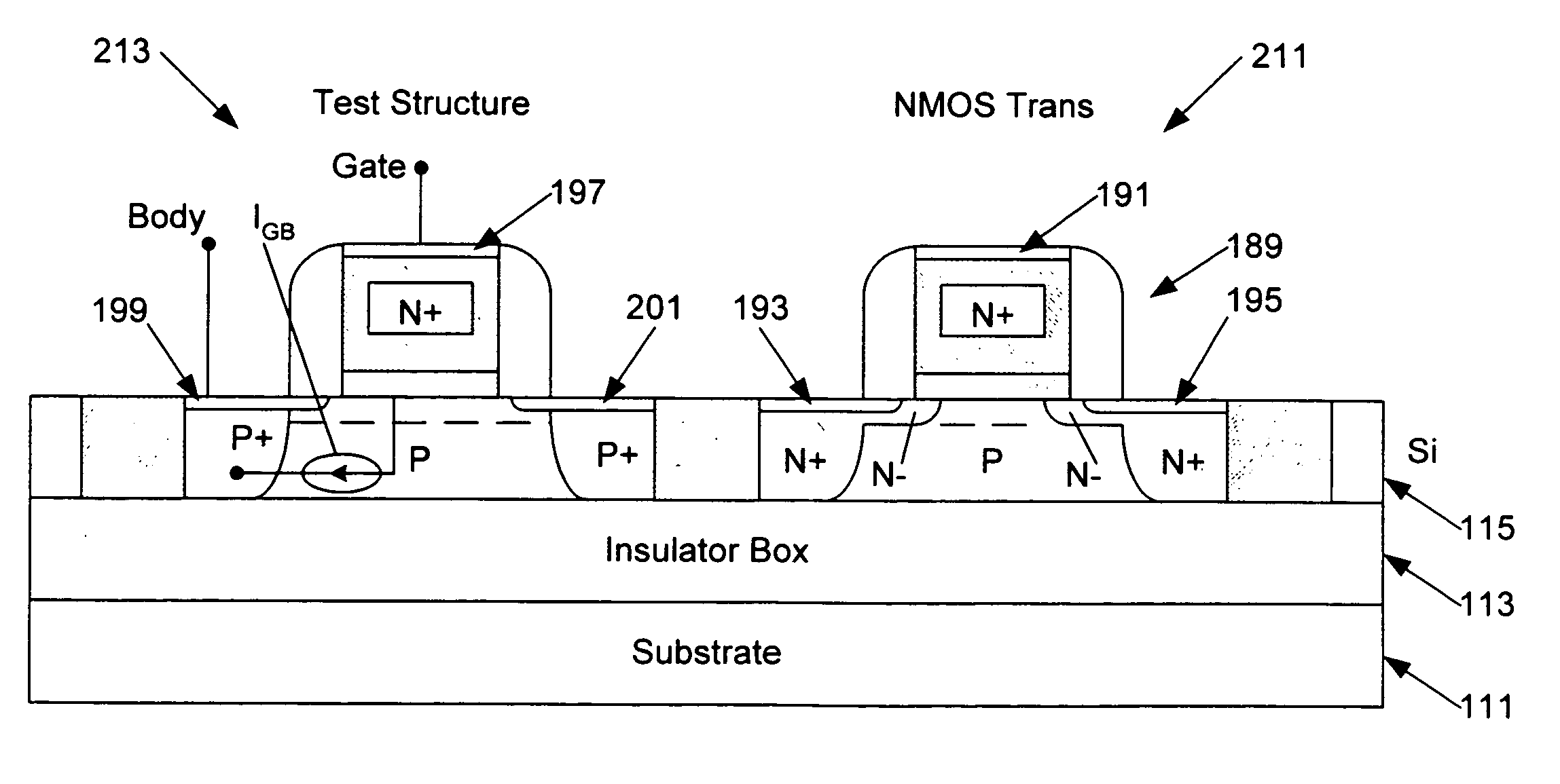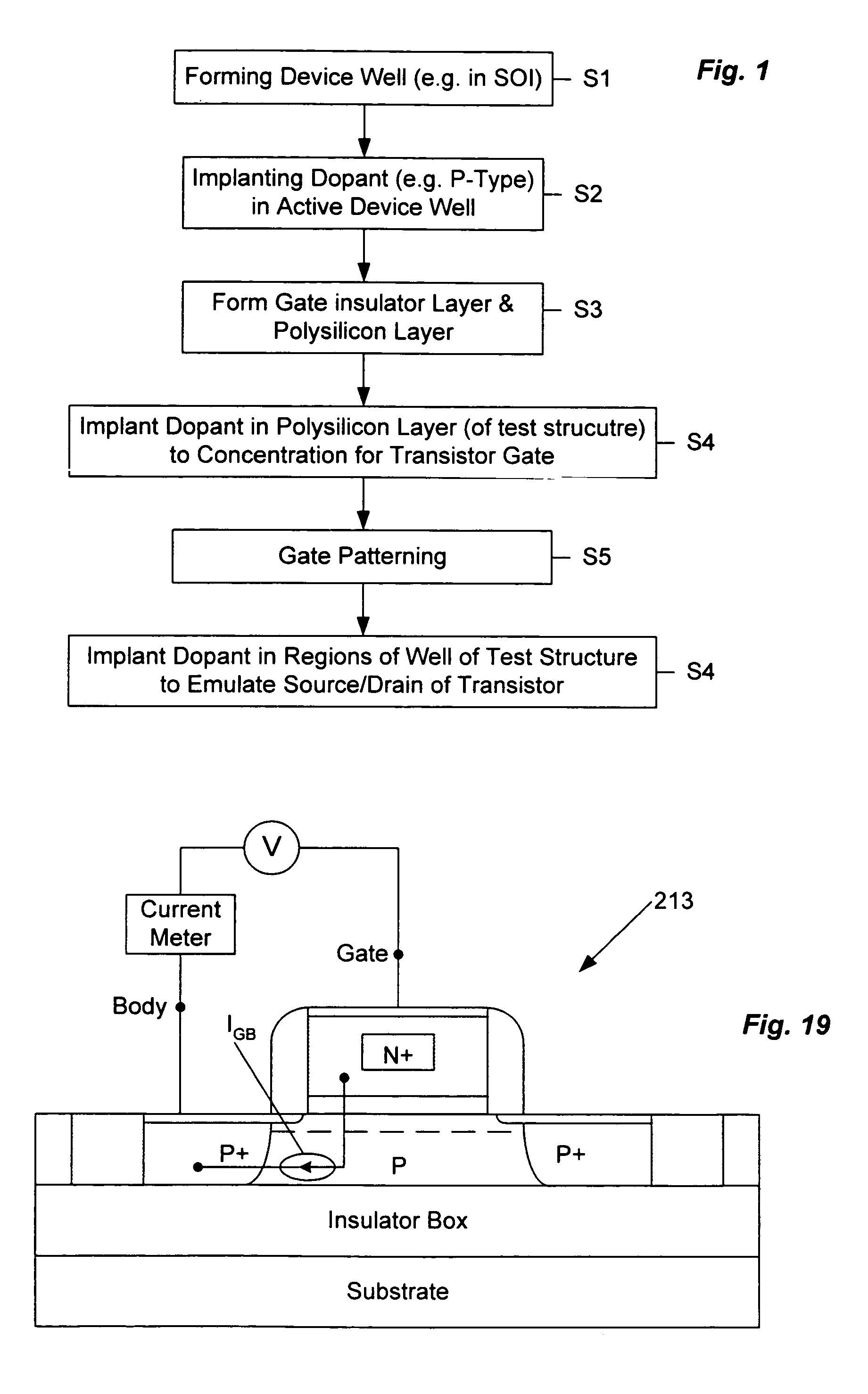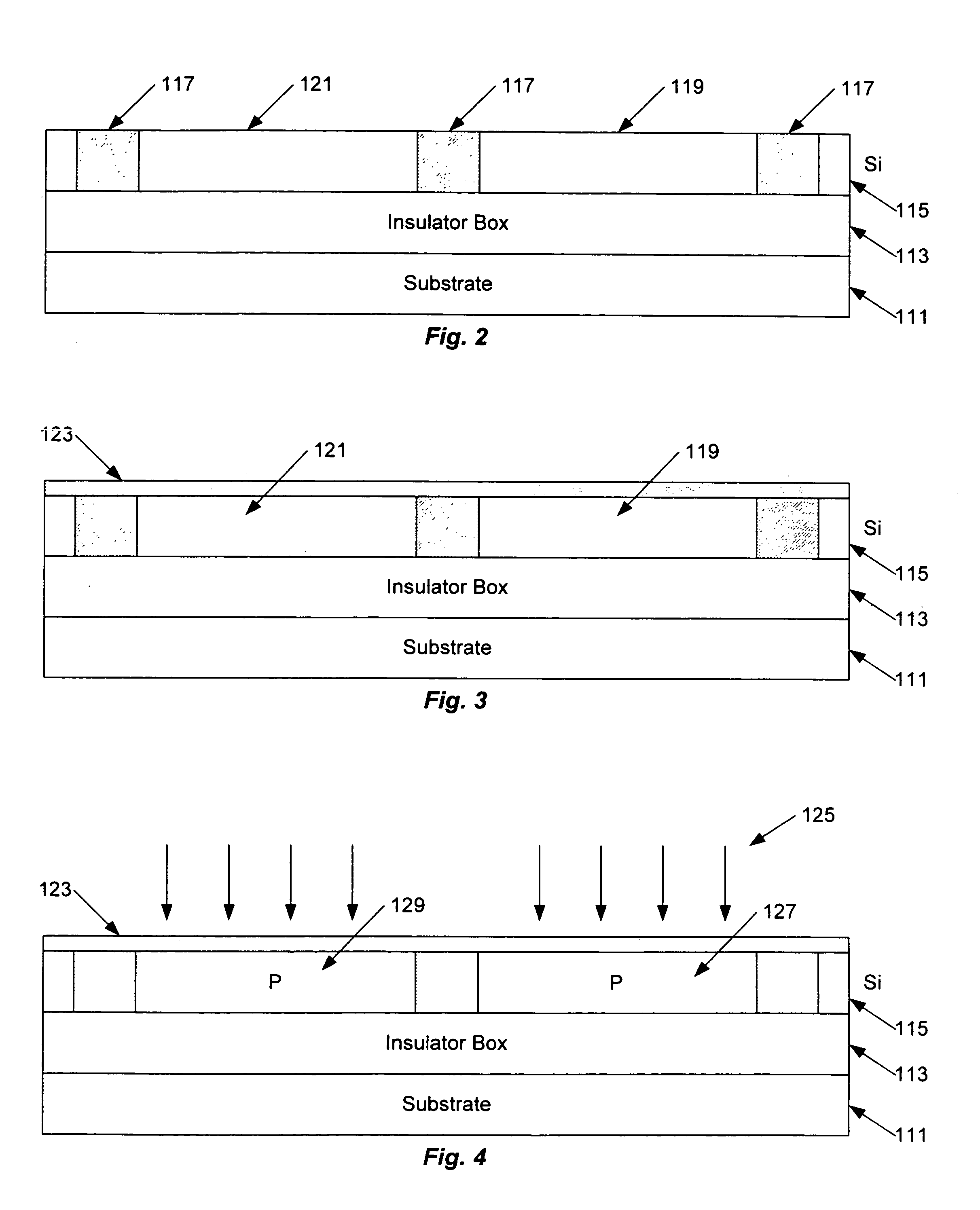Method of making a test structure for gate-body current and direct extraction of physical gate length using conventional CMOS
a test structure and gate-body current technology, applied in the direction of individual semiconductor device testing, semiconductor/solid-state device testing/measurement, instruments, etc., can solve the problems of loss of gate control of transistor current, kink in transistor current/voltage curve, and carrier multiplication near the drain end of the channel
- Summary
- Abstract
- Description
- Claims
- Application Information
AI Technical Summary
Benefits of technology
Problems solved by technology
Method used
Image
Examples
Embodiment Construction
[0041]The various techniques disclosed herein relate to semiconductor processing to construct a test structure, which is useful in measuring gate-body currents in MOS transistor devices and / or in measurement of gate current as a means to measure physical gate length of a transistor device. The test structure is designed to mimic an MOS device of interest for testing and analysis purposes, so that tests on the test structure provide desired information regarding the MOS device of interest. The MOS device and the test structure may be elements constructed on a bulk semiconductor substrate, however, the methodology and the test structure are particularly advantageous when applied in the context of silicon-on-insulator (SOI) type integrated circuits.
[0042]Since the techniques of particular interest at this point relate to manufacture of the test structure, an exemplary manufacturing process is described, first at a high level with regard to FIG. 1 and then in more detail with reference ...
PUM
 Login to View More
Login to View More Abstract
Description
Claims
Application Information
 Login to View More
Login to View More - R&D
- Intellectual Property
- Life Sciences
- Materials
- Tech Scout
- Unparalleled Data Quality
- Higher Quality Content
- 60% Fewer Hallucinations
Browse by: Latest US Patents, China's latest patents, Technical Efficacy Thesaurus, Application Domain, Technology Topic, Popular Technical Reports.
© 2025 PatSnap. All rights reserved.Legal|Privacy policy|Modern Slavery Act Transparency Statement|Sitemap|About US| Contact US: help@patsnap.com



